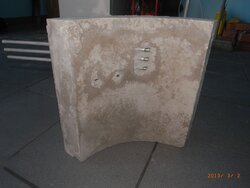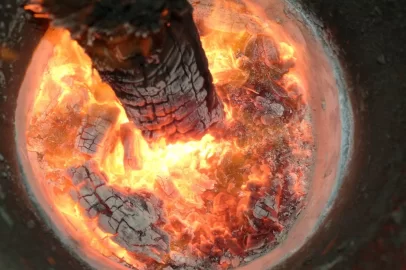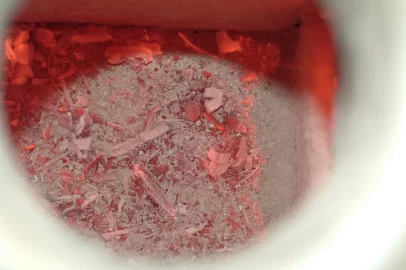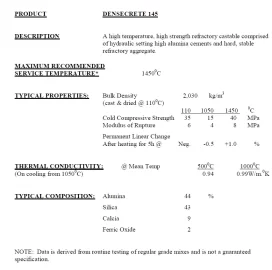During the summer months down under I have been busy rebuilding the primary and secondary chambers of my wood boiler and have some pictures to display.
The burn chamber was caste in five parts using high temperature refractory and the pieces were butted together and held firmly in place inside a steel drum and surrounded by refractory insulation.
A tube leads to the new secondary chamber which has a steel outer casing and is lined with firebricks and refractory insulation. A clean-out port is installed in the top of the secondary chamber.
The outlet from the secondary chamber feeds heated air to the heat exchanger.
The blue drum on top of the wood feed chamber is to contain flames that may leap out when dropping wood into the chamber. (This does not happen if the air supply fan is switched off)
The flow of cold water into the heat exchanger is controlled by the motorized 2 inch ball valve and a thermostat.
Air is fed into the burn chambers by fourteen stainless steel tubes in a manner to cause swirling and great turbulence.
I am now waiting for some cold weather to give the heater a test run with the new components installed.
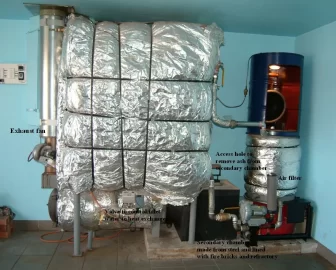
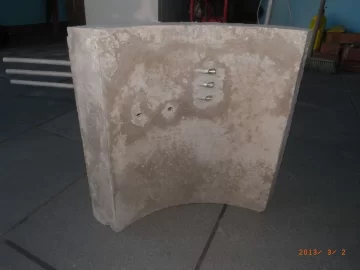
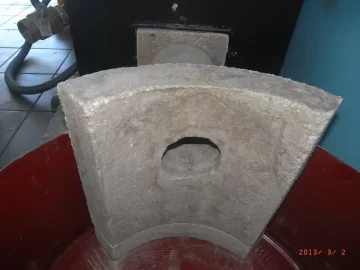
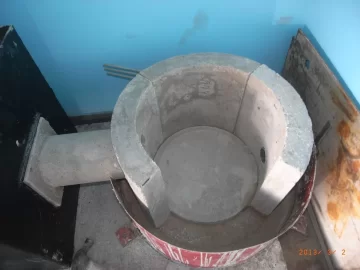
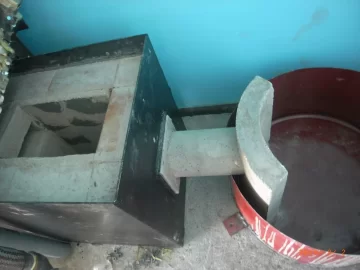
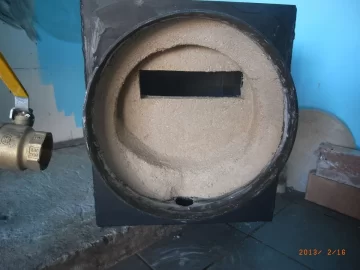
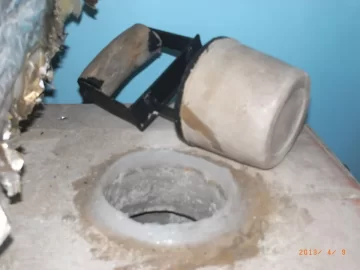
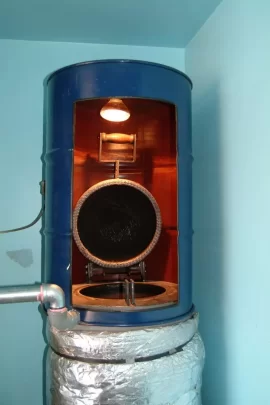
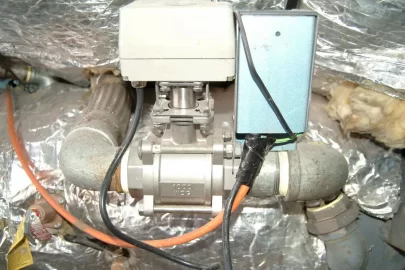
The burn chamber was caste in five parts using high temperature refractory and the pieces were butted together and held firmly in place inside a steel drum and surrounded by refractory insulation.
A tube leads to the new secondary chamber which has a steel outer casing and is lined with firebricks and refractory insulation. A clean-out port is installed in the top of the secondary chamber.
The outlet from the secondary chamber feeds heated air to the heat exchanger.
The blue drum on top of the wood feed chamber is to contain flames that may leap out when dropping wood into the chamber. (This does not happen if the air supply fan is switched off)
The flow of cold water into the heat exchanger is controlled by the motorized 2 inch ball valve and a thermostat.
Air is fed into the burn chambers by fourteen stainless steel tubes in a manner to cause swirling and great turbulence.
I am now waiting for some cold weather to give the heater a test run with the new components installed.











